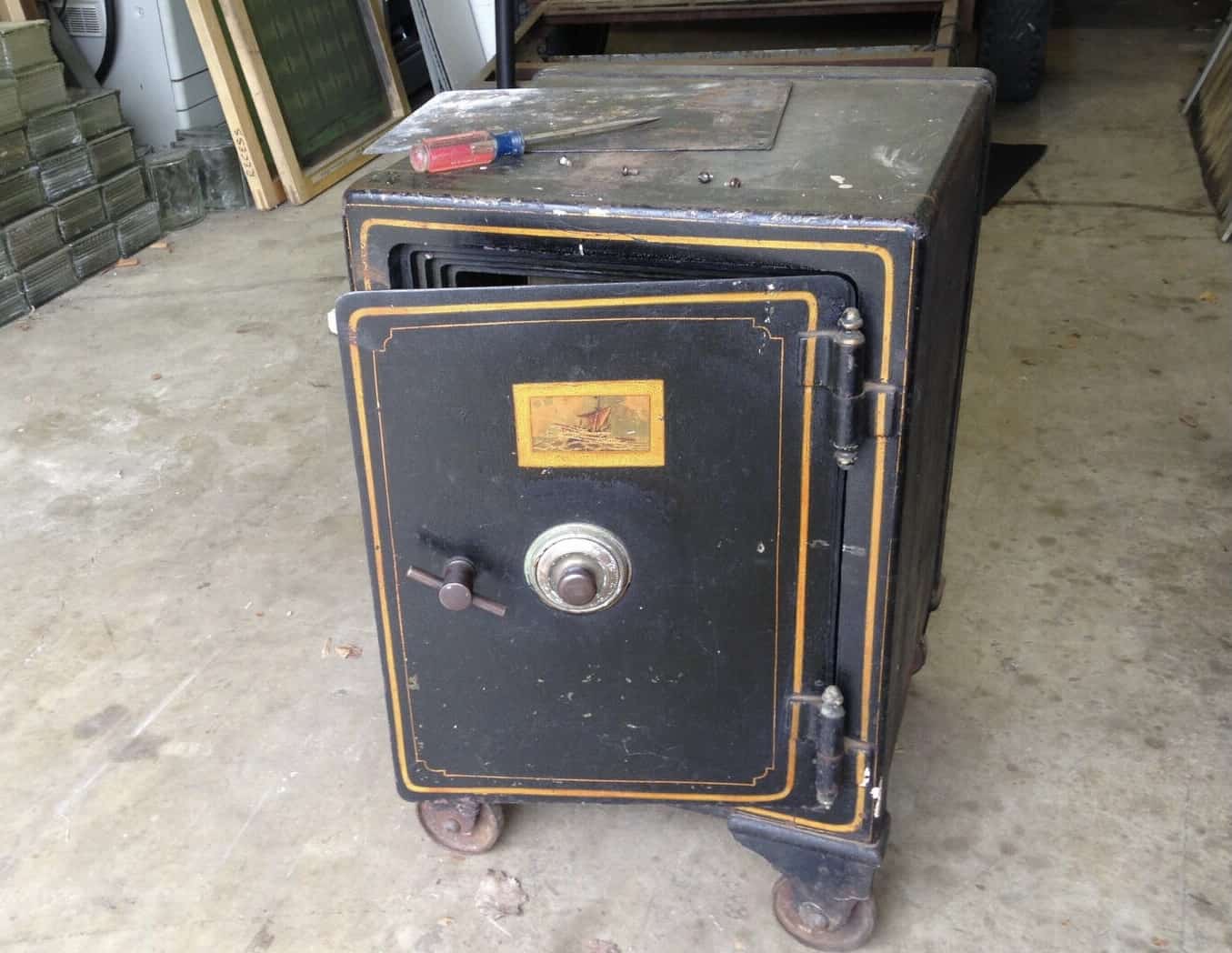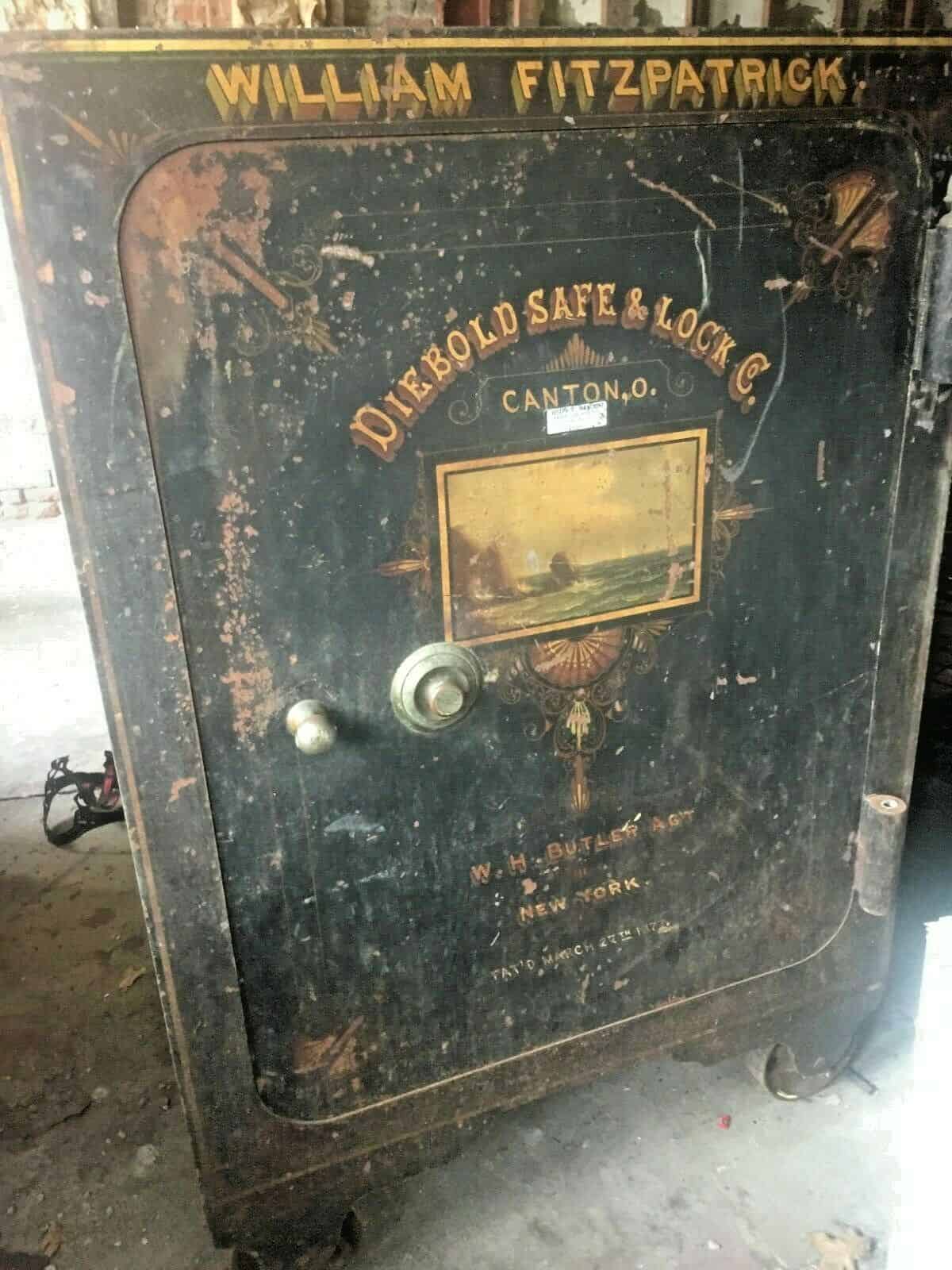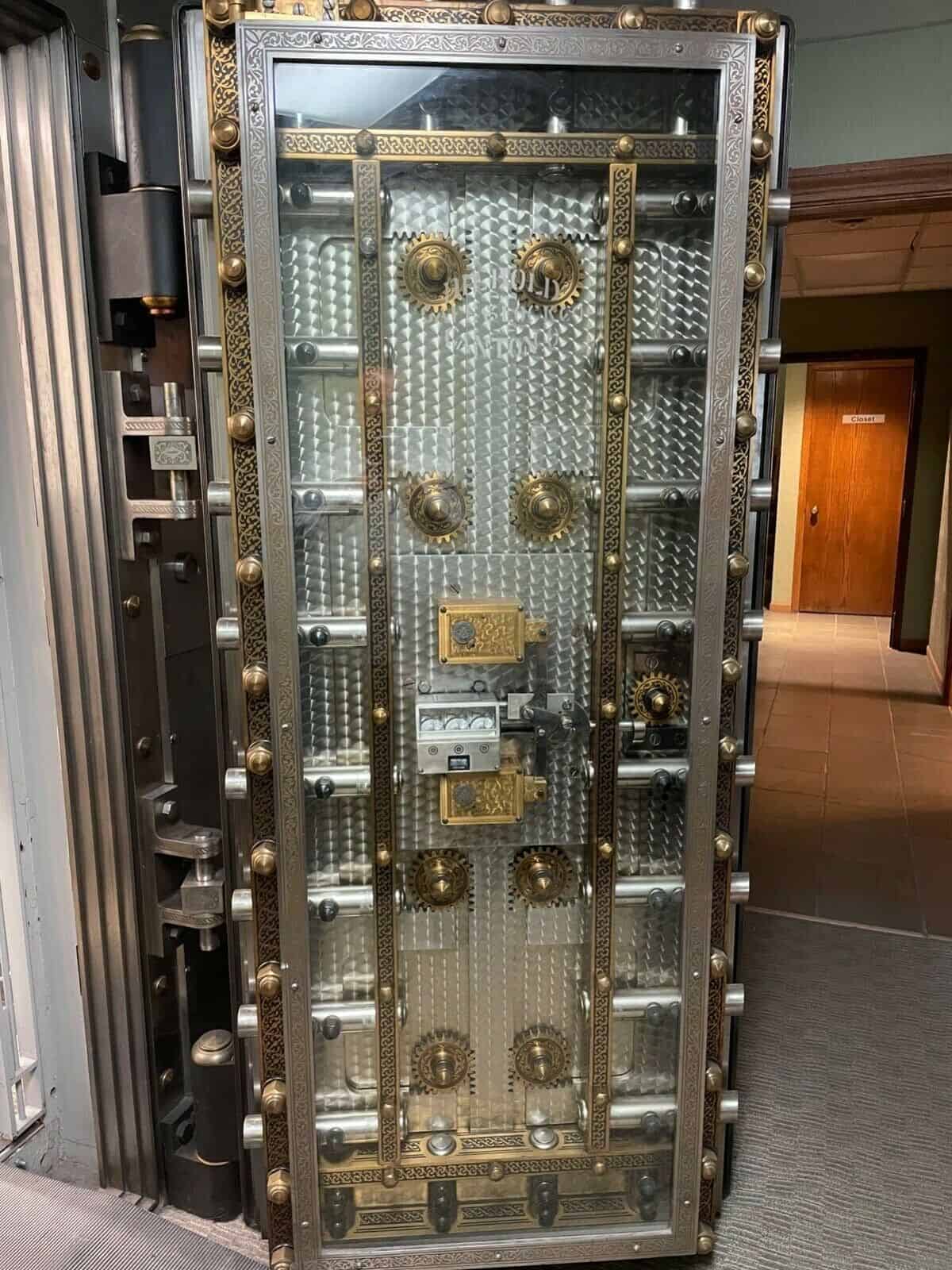If you’re an antique fan looking to buy a safe that can protect your valuables from burglaries and fire, you should consider getting a Diebold safe. This company was the first to introduce many security features that are found in nearly every modern safe.
In this article, we’re going to talk about everything regarding antique Diebold safes, including the company history, a step-by-step guide on opening a safe, the most popular Diebold safe models, and much more.
Table of Contents
History of Diebold Safe
Diebold was founded by German immigrant Charles Diebold in 1859. At the very start, Charles employed 250 people and manufactured bank vaults and safes. The business was going well, but it boomed in the 1870s, specifically following the Great Chicago Fire of 1871.
There were almost 900 safes in the fire, and they stored nearly the only property that wasn’t destroyed during the fire. It was a great story to use in advertisements, and Diebold became an industry-leading company.
How to Open a Safe Combination Diebold?
All types of Diebold safe models are opened with the same basic technique, but there are several nuisances that might vary depending on the model. Regardless of the model, you always have to rotate the dial at least five times before attempting to enter the code.
The general steps of opening a Diebold safe are the same, so for example let’s say you have a 5-digit combination code:
- Spin the dial clockwise for five rotations, stopping on the first digit of the code on the fifth rotation.
- Spin the dial clockwise for four rotations, stopping on the second digit of the code on the fourth rotation.
- Repeat this pattern for the rest of the numbers (3 rotations for the 3rd number, 2 rotations for the 4th, 1 rotation for the 5th).
Depending on the model, you might only have a 3 or 4-digit combination, then you have to start with 3 or 4 rotations for the first number of the code and then continue with one less rotation for every subsequent number of the code.
Some safes also require you to alternate between rotating clockwise and counter-clockwise. If you’re unsure about how to unlock the safe, it’s always best to contact your local locksmith.
Diebold Safe Models
Diebold is most known for its industrial safes and bank vault doors. Some of them were even custom-made according to the bank’s demands. However, they had also cracked the general consumer market and made smaller safes designed for personal use.
There are simply too many models to mention them all, but some of the popular antique Diebold safe model lines include:
Diebold Cashgard Chests
This model line included secure safes for general consumers and small businesses. They were relatively compact, especially compared to vaults made for banks, but were still resistant to burglaries.
Cashgard chests had crinkle olive green exterior, crinkle black doors, and white interior. They featured 1-inch thick walls and 1 ½-inch thick doors made of SAE 1030 steel.
For additional security, the locking mechanisms were protected by ¼-inch thick drill-resistive steel plates that were 3-inch thick at the edges. Some of the most popular models were as follows:
- Diebold Cashgard Chests No. 1161, No. 1162, and No. 1165
These were small safes for those that didn’t have too many valuables to store. In a 1937 catalog, Diebold stated that these models:
“Reduce burglary insurance rates (as compared to ordinary containers) enough to pay for themselves in one to three years in most cases…”
Nos. 1161, 1162, and 1165 only differed in size, ranging from the outside height and width of 10 ½ inches to 11 ¾ inches. They could be installed in concrete blocks, walls, and floors.
- Diebold Cashgard Chests No. 1180 and No. 1181
These two models were among the most popular in the Cashgard Chest line. They featured a special compartment accessible from the top of the safe that was advertised for “Daily Receipts”.
Because of that, Diebold recommended these models for grocery stores, theatres, and box offices, as the cashier could safely and quickly store daily profits in that vertical compartment.
It also had a bigger, second compartment for storing cash during the night. The models differed in size, with No. 1180 having an outside height of 19 inches, and No. 1181 having a height of 25 inches.
The Commander Line
This Diebold safe line consisted of models specifically designed to protect paper records from a fire. Naturally, they were fire-resistant and could withstand extreme heat. Some of the models in this line were as follows:
- Diebold Commander Safe No. 42
It was the most popular Diebold safe model for storing company records. Its outside is 46-inches tall, 25-inches wide, and 26-inches deep. The inside was 34-inches tall, 18-inches wide, and 19-inches wide.
It had 4 vertical compartments, the lowest being the tallest.
- Diebold Commander Safe No. 44
Another popular model was No. 44, which was much taller, with an outside height of 62 inches and an inside of 50 inches, but having the same width and depth as the No. 42 model.
This model had 9 compartments of varying sizes and shapes, some of which were vertical.
Other popular Diebold safes include The Commercial and Electric Rekordesk Safe lines.
How Old Is My Diebold Safe?
It’s difficult to correctly identify the age of an antique Diebold safe. Your best bet is to contact a local antique shop or locksmith to see if they could take a look at your antique and help you date it.
However, nearly all Diebold safes have embossed maker’s mark, which can be located pretty much anywhere on the safe, but most likely you’re going to find it on the inner side of the door, or at the back of the safe.
Diebold maker’s mark is an embossment with the company’s name that changed throughout the decades. Because it’s known when Diebold changed its name, it can help you roughly estimate the age of your Diebold safe:
- Diebold Bahmann Safe Company – From 1871 to 1876
- Diebold Safe & Lock Company – From 1876 to 1943
- Diebold, Incorporated – From 1943 to 2015
Additionally, you can find embossments on the safe lock, which usually says the patent number that you can look up online to see when it was patented.
Diebold Safes Value
Antique Diebold safes vary in price drastically, some being sold just for $100, while others fetching 4 or even 5-figure sums. With so many different models being made throughout the years, it’s impossible to list the value of every single Diebold safe.
However, we can take a look at the factors influencing the price of a Diebold safe, so you get a rough idea of what determines the value:
Size and Model
It’s simple as that, some models of Diebold safes are valued more than others. It’s usually because some safe models are huge and were made for banks. Naturally, such big safes are going to cost more than smaller safes intended for consumers.
Also, some models are more secure than others, which also means they’re more valuable.
Functionality
Antique Diebold safes aren’t bought by antique collectors to be displayed in their rare collectible collection. People are buying them to use in practice and protect their valuables from being stolen.
As a result, functionality influences Diebold safe price much more compared to other antiques that aren’t supposed to be used. Safes in working order are almost always going to be more expensive than those needing repairs.
Age
Antique Diebold safes are still antiques, and there’s a rule of thumb applying to all antiques; the older the item, the more valuable it’s going to be. In general, Diebold safes from the 1890s are going to be much more expensive compared to those made later.
Condition
Another rule of thumb that applies to all antiques is that the better the condition of the item, the more valuable it’s going to be. Even the biggest and oldest Diebold safes aren’t going to sell for much if they’re noticeably damaged.
Now we can take a look at a couple of antique Diebold safe listings so you can get an idea of their value:
This listing offers one of the oldest Diebold safes out there. As expected, its condition isn’t the best, and it’s damaged, starting from peeling paint to a missing knob. Regardless of that, it’s asking for $700.
It’s an 82-inch tall 9,400-pound bank vault door that was used by a former bank. It’s in excellent condition and features a tempered glass cover and artistic adornments.
The glass cover has an inscription of “Diebold Safe & Locke Co. Canton OH”, meaning the door was made in or before 1943. The door sold for $25,000 on May 10, 2022, on eBay.
As you could see, the value of Diebold safes varies drastically and has to be determined on a case-to-case basis.
Final Words
To this day antique Diebold safes are among the best choices for keeping your cash and other valuables safe. There’s a reason why this company is in business to this day, so you’re not going to miss by purchasing an antique Diebold safe.



Do you know if the type of safes made from 1876 to 1943 contained asbestos in the insulation?